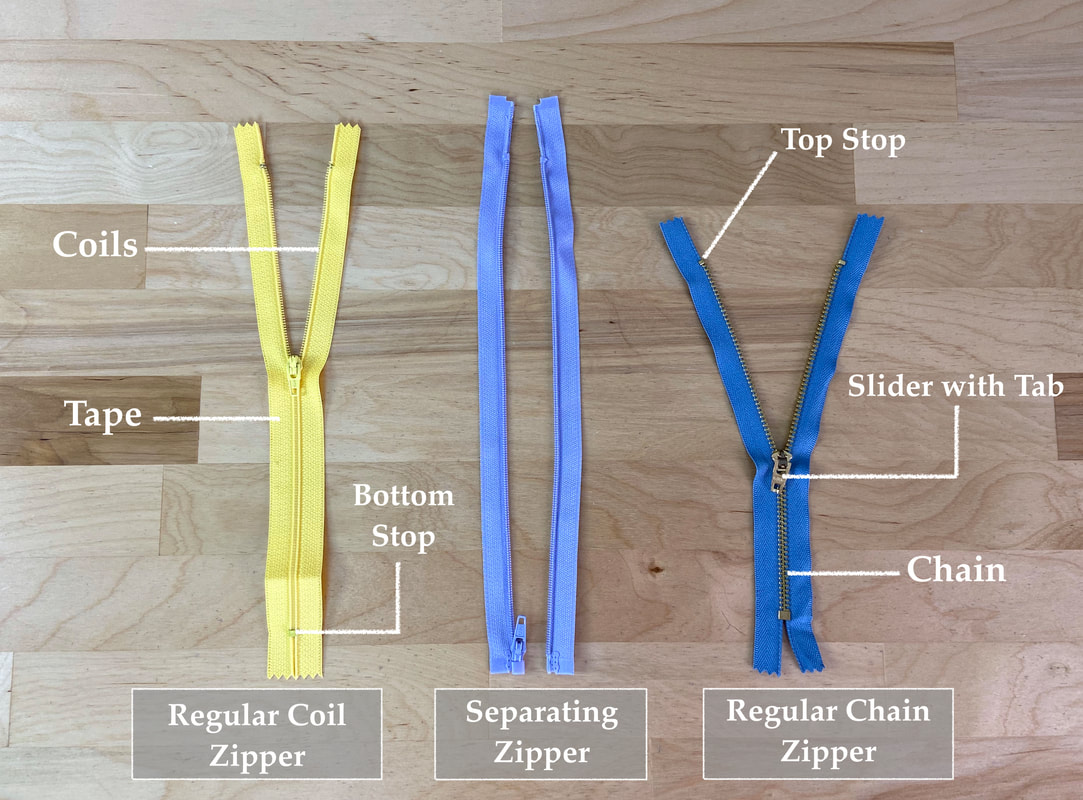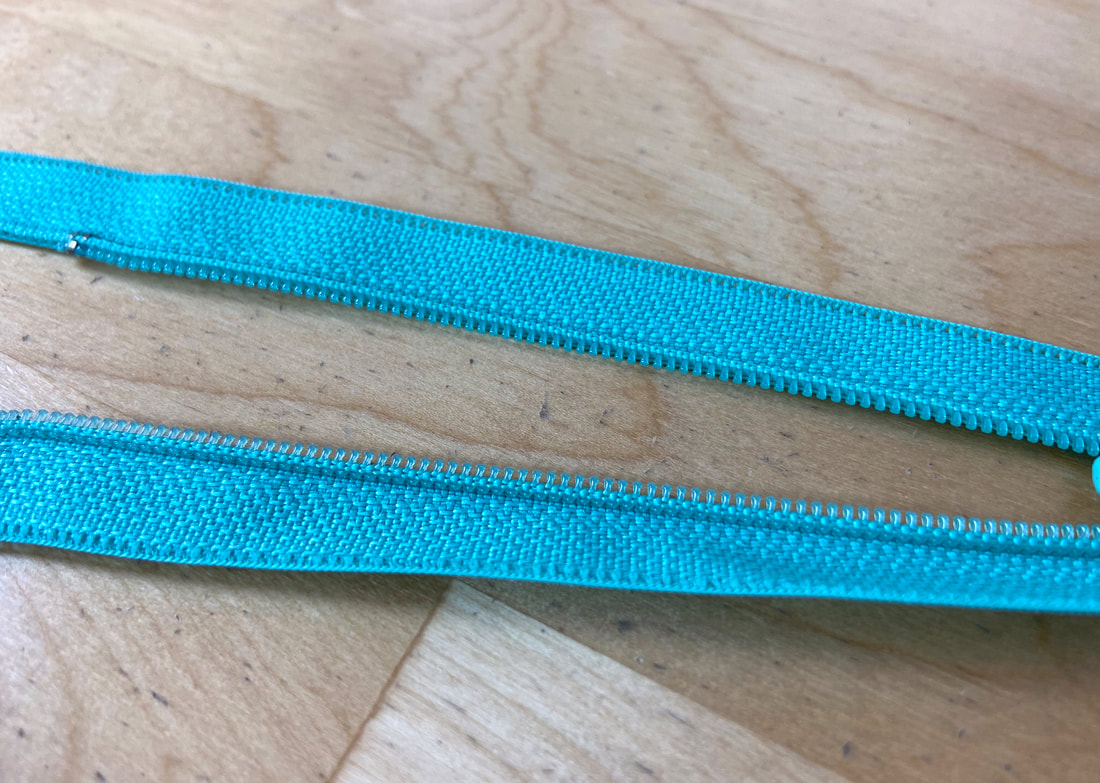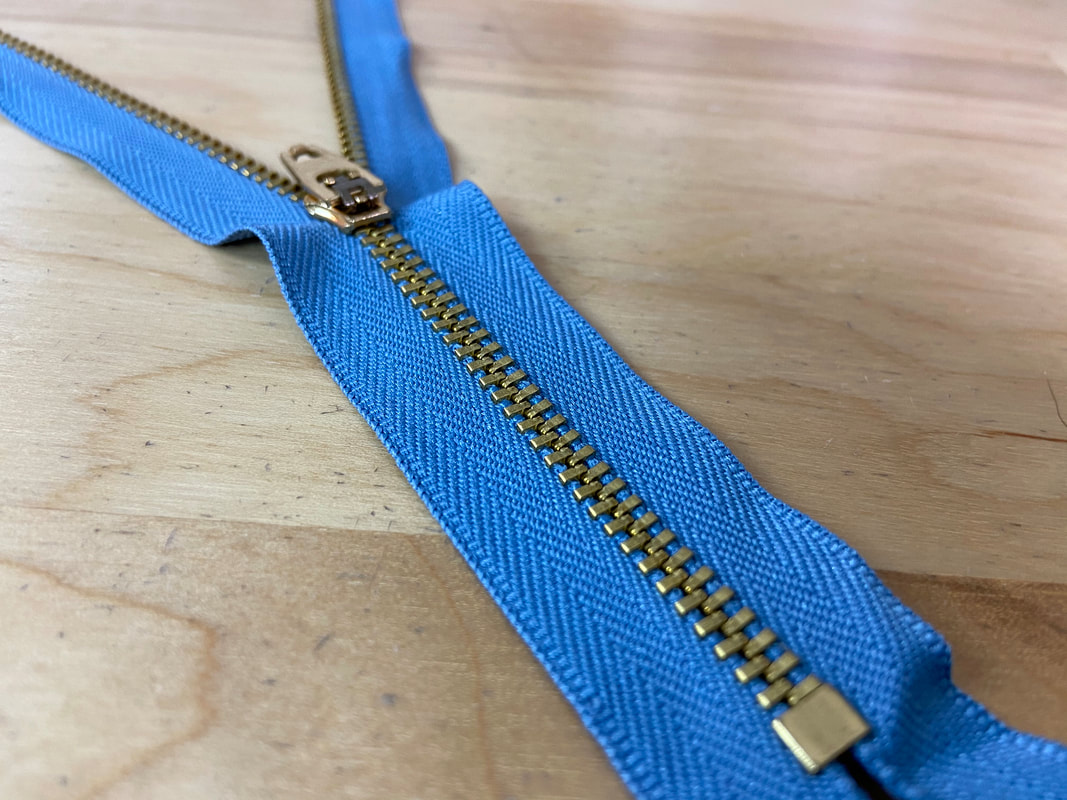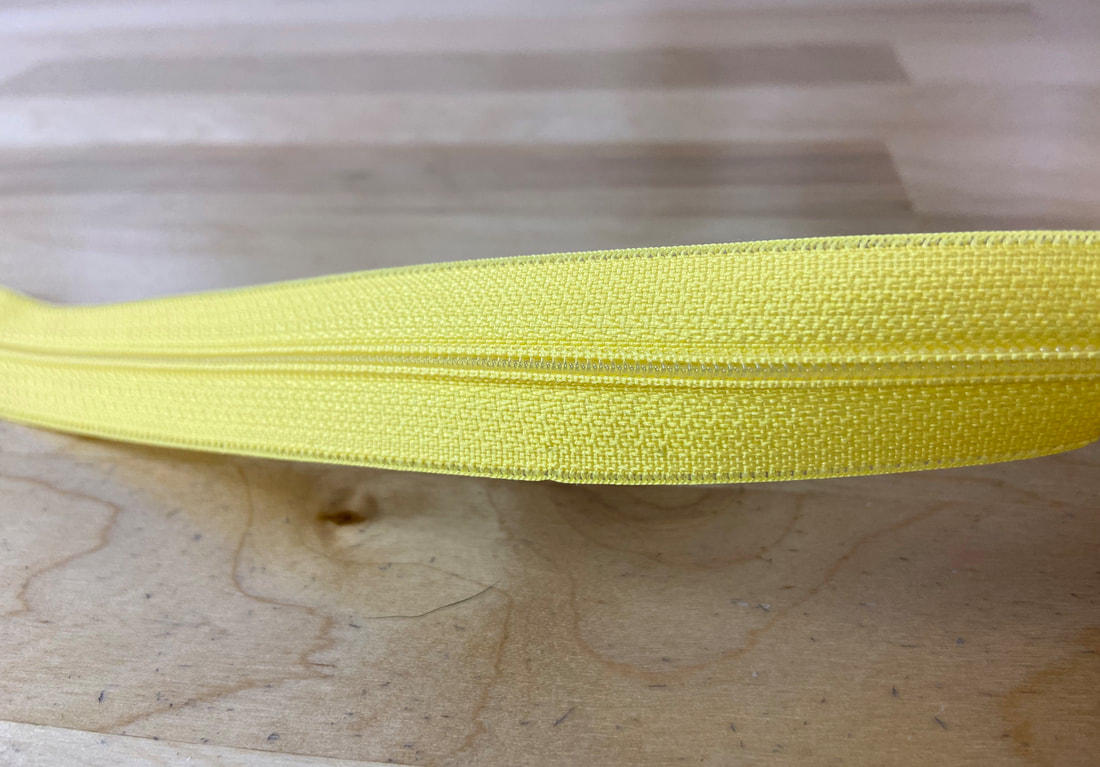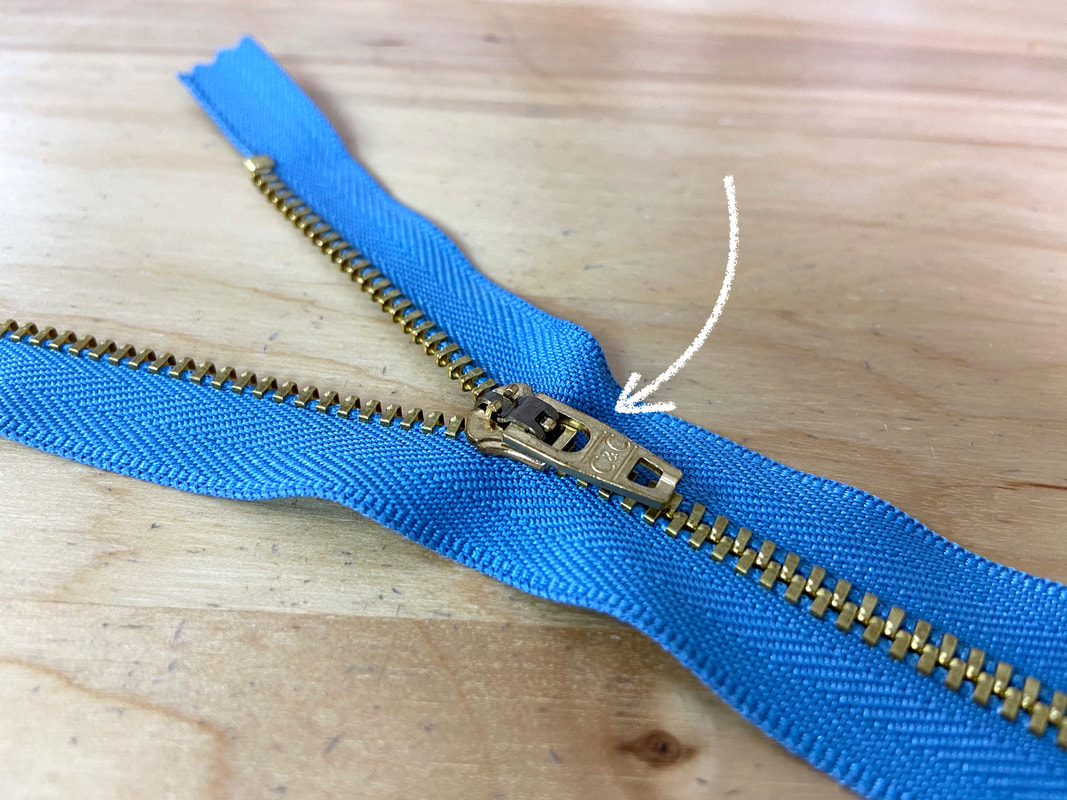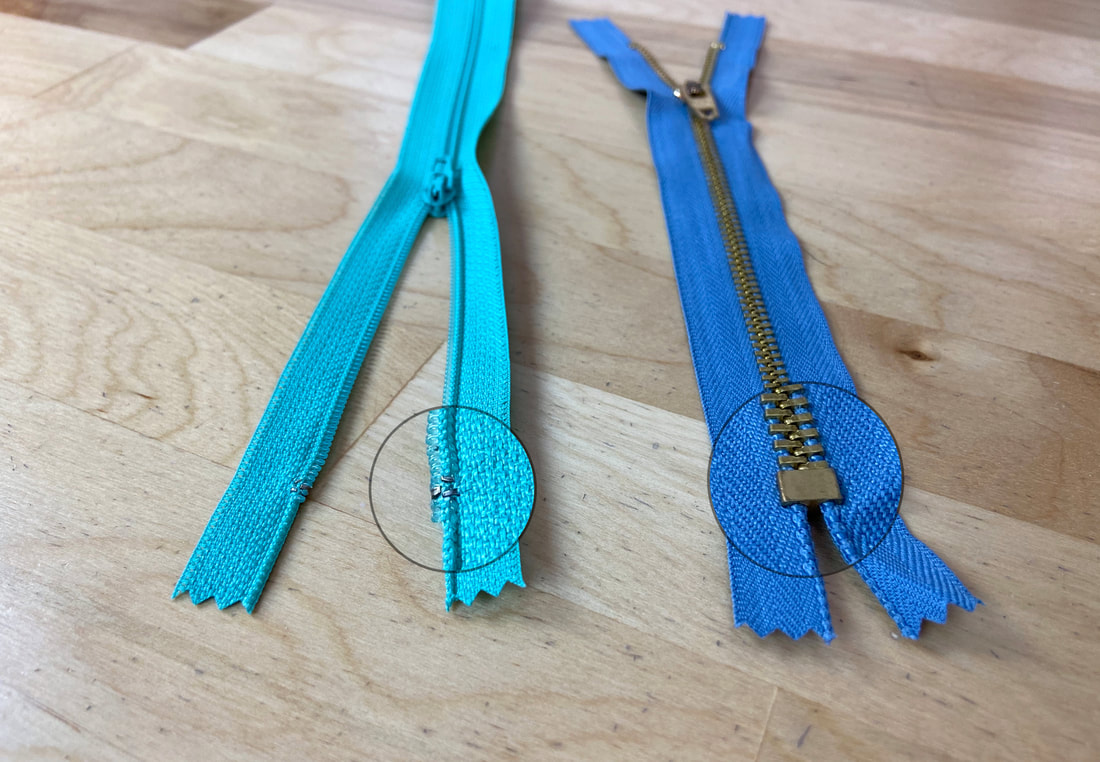Understanding Basic Zipper Components In Dressmaking
Recognizing basic zipper components will help you understand how a zipper (regardless of style) functions. The diagram above displays a zipper's essential components. These are discussed in more detail below:
Zipper coils are the plastic links that form the zipper track. Coils are essential to the zipper's functionality as they serve the basic means of closing and opening the zipper. The coils are conventionally made of polyester or plastic...
When the zipper track is constructed of metal, the links are no longer referred to as coils but chain, which is described in more detail below:
When the zipper track is constructed of metal, the links are no longer referred to as coils but chain, which is described in more detail below:
Metal chain serves the same purpose as regular plastic coils but are constructed a little different. The links interlock one after the other forming a slightly different connection. Metal chain zippers or often bulkier and heavier thus are often used for more heavy duty projects. Metal chain can be used with both closed-end and separating zippers.
The zipper tape is a strip of fabric that holds the zipper coils or metal chain in place and ultimately, connects the zipper to the garment edges. The zipper tape is wide enough (usually 3/8"-1/2" wide) to be comfortably stitched but not so wide that its add unnecessary excess/bulk to finished garment. It is built to be highly durable and withstanding long-term heavy duty use. The tape's textured, semi-linear structure can be used as a stitching guide in the application process.
The zipper slider with tab allows for comfortably closing and opening the chain or coils. Naturally, the slider features a mechanism that closes the zipper track when moved upward and opens it when moved downward.
The tab offers a comfortable way to move the slider up and down. Tabs can feature a variety of different shapes and styles depending on the zipper brand or clothing manufacturing company. It can serve just as much a functional purpose as it can a decorative one.
The tab offers a comfortable way to move the slider up and down. Tabs can feature a variety of different shapes and styles depending on the zipper brand or clothing manufacturing company. It can serve just as much a functional purpose as it can a decorative one.
The zipper's top and bottom stops prevent the slider from coming off the coil or chain zipper track. While these portions are small and unassuming, they are essential to the zipper's full functionality. If the slider comes off the track, it is virtually impossible to realign it back to the zipper coils/chain by hand.
While the top stops serve the sole purpose of blocking the slider from sliding off when the zipper is closed, the bottom stop in a closed-end zipper not only prevents the slider from coming off the track it also keeps the bottom of the zipper permanently closed (as shown in the image above).
While the top stops serve the sole purpose of blocking the slider from sliding off when the zipper is closed, the bottom stop in a closed-end zipper not only prevents the slider from coming off the track it also keeps the bottom of the zipper permanently closed (as shown in the image above).

